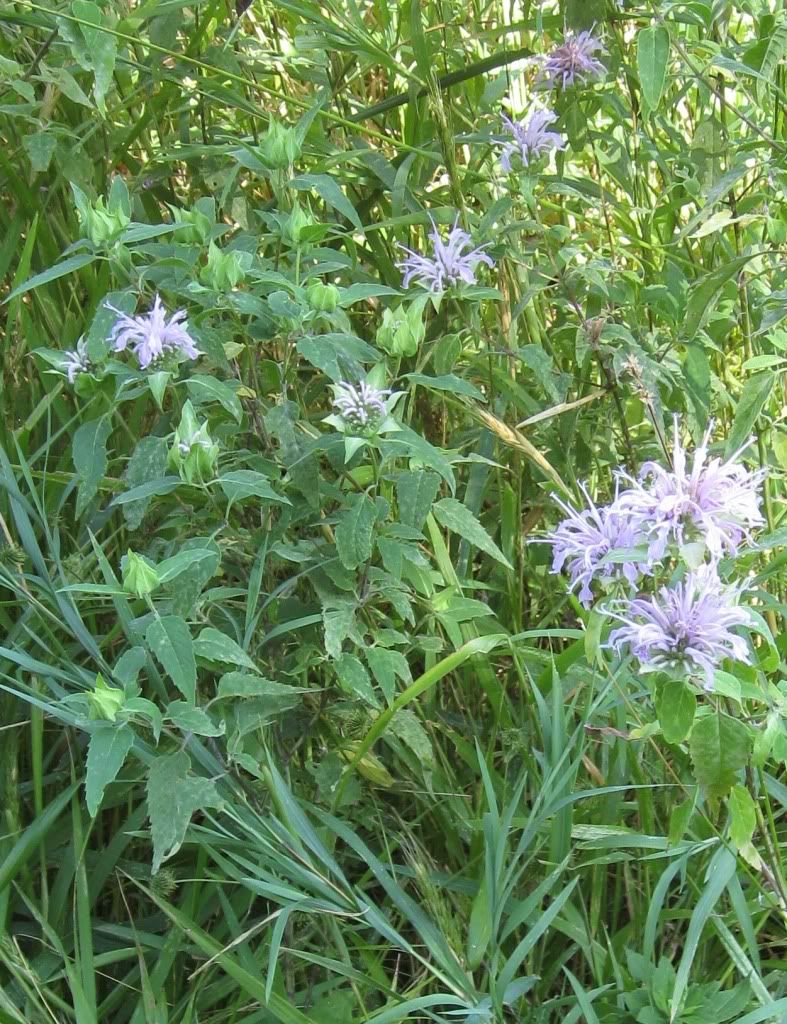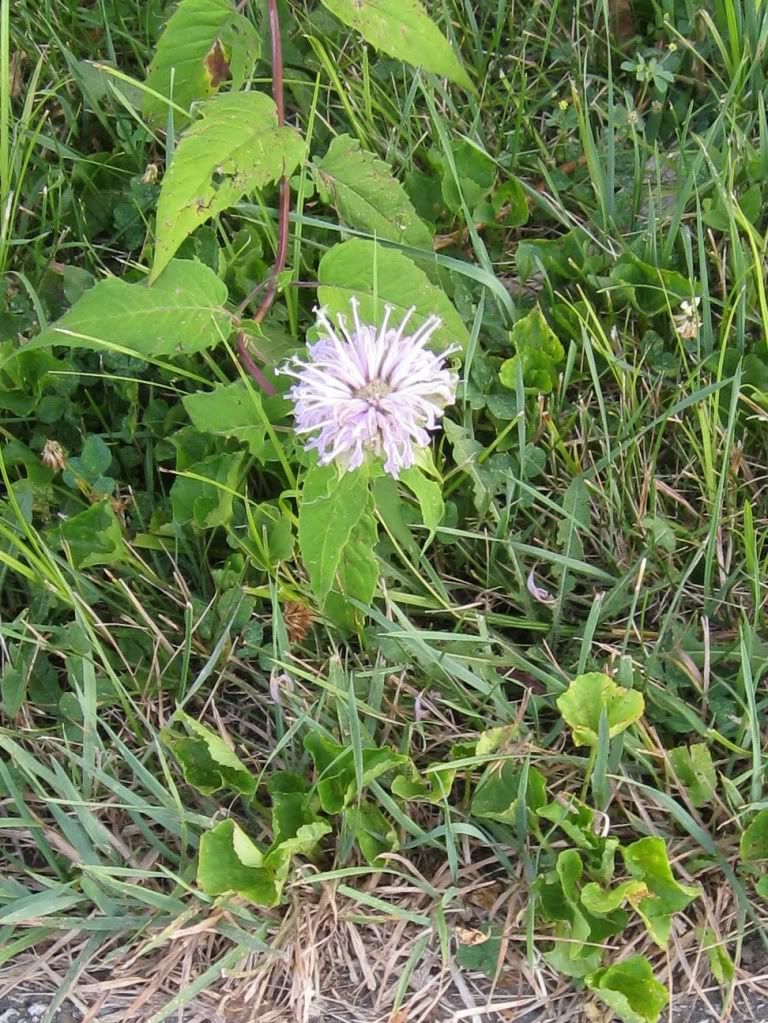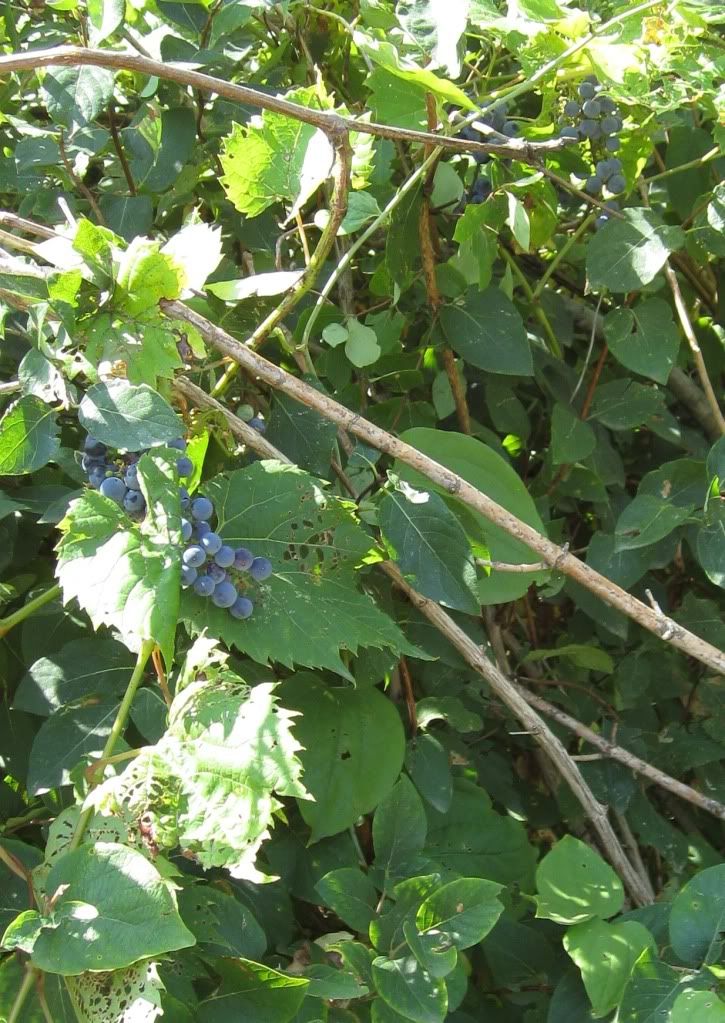This week’s featured wildflower is horsemint, which is blooming like crazy along several Polk County bike trails. Also commonly known as bee balm or wild bergamot, horsemint is in the same family as oswego tea of the July 4 “red, white and blue” wildflower diary. Several photos of horsemint are after the jump.
As a bonus, I included some bunches of ripe wild grapes. I missed out on photographing that woodland plant in flower during the spring.
This is an open thread: all topics welcome.
Horsemint (monarda fistulosa) grows throughout Iowa along roadsides, near woods, or in old pastures. As with oswego tea, what looks like one flower with ragged petals is actually many tube-like flowers clustered together. Horsemint has square stems and usually is several feet tall. The leaves are toothed at the edges. The plant can bloom anytime between July and September in Iowa. Here’s a plant with some flowerheads open and others closed.
The flowers are pink or lavendar. You can see the individual tubes a little better here:
I have rarely seen a horsemint flowerhead all on its own like that, though. Usually the plant grows in colonies, because it spreads easily.
Horsemint, oswego tea, and other plants in the monarda family are famous for their healing properties:
Monarda’s long history as a healing herb is reflected in its name, which comes from the 16th-century Spanish physician, Nicolas Monardes, who wrote the first herbal about botanicals from the New World. Called by the common names of bee balm, horsemint and bergamot, it’s part of the mint family, identifiable by square-shaped stems. Native Americans made use of monarda’s essential healing oils, and spotted bee balm (Monarda punctata) is said to relieve coughs, colds, fevers and minor digestive complaints.
Spotted bee balm is native to Iowa, but I have not seen its yellow flowers with purple spots.
Here’s one last shot of a horsemint colony. That’s yellow coneflower in the upper left part of the photo and white snakeroot (nice to look at but not to graze on) in the lower left.
Finally, here’s a look at a treat you may find out in the woods this time of year. Wild grape is a food source for many birds and mammals, so I left it alone, although I was tempted to take some home for a snack. Both native Americans and pioneers enjoyed wild grapes fresh or preserved as jam or dried fruit.






2 Comments
beebalm
i have some red beebalm in my rain garden. It usually blooms early and grows hip high or higher. This year, which is about year 4 of it in the garden, it barely grew and did not bloom very well. someone told me it peters out after a few seasons, but maybe this was a bad year b/c of the weather.
rockm Fri 20 Jul 8:15 AM
horsemint
I don’t know about beebalm, but horsemint tends to be a short-lived perennial in many prairie reconstructions. I’ve seen it persisting longer in weedy situations when the competition is mainly Eurasian grasses like brome. But it can pop up again in little disturbed areas on established prairies.
PrairieFan Sun 30 Apr 1:10 AM